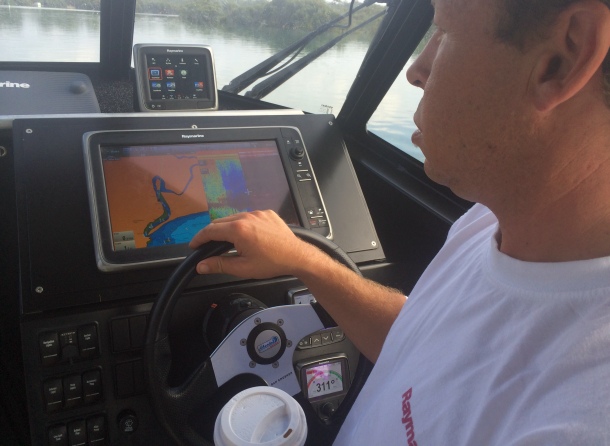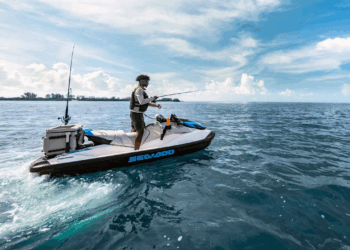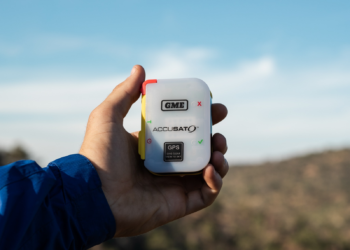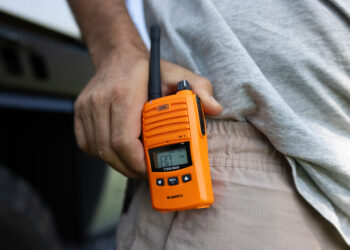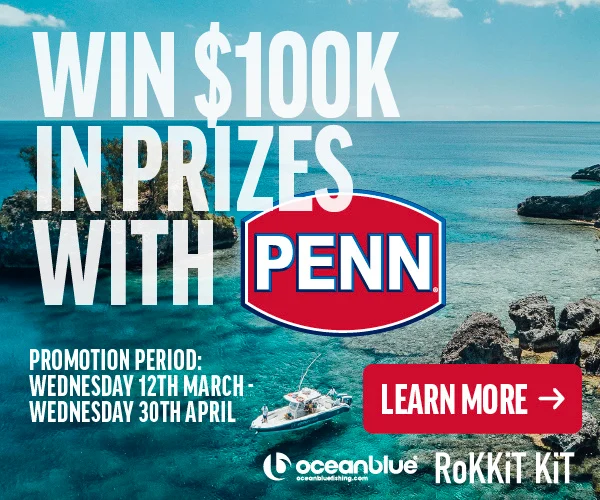EVEN the most basic modern marine electronics are now a far cry from the clunky old screens of just a decade ago. But when you move up a notch and start investigating what’s possible with top-of-the-line sounders and plotters, you begin to realise that we now have access to some quite amazing technology.
Much of what is available is probably out of reach of the “average fisho” but technology has a habit of filtering down, meaning that current features on high-end units will probably be standard fitment on quite basic units in just a few years.
The potential of modern marine electronics was brought home to me in a big way last Friday when I spent a morning out in Jervis Bay aboard the Raymarine test boat, a Bar Crusher 670 HT powered by a 200HO Evinrude E-TEC.

Raymarine has set up its Bar Crusher project boat to demonstrate its various products plus allow high tech testing and data analysis.
This tough plate alloy sportfisher was rigged up with an amazing array of screens, transducers and other hi-tech electrical wizardry. The Raymarine guys use the boat to demonstrate product to dealers and customers and also as a testing platform. The boat is equipped with an inverter to power an onboard laptop which analyses raw data from the various units so technicians can finetune software and do performance tests.
The Crusher’s transom sported three separate transducers – two 1 kW models and a smaller DownVision version. An enormous 3kW ‘ducer can be bolted on the marlin board – this beast, which is designed for through-hull mounting large cruisers, reaches bottom in 10,000 feet.

The transom of the Raymarine Crusher showing the various transducers. A massive 3kW ‘ducer can be bolted under the boarding platform, allowing sounding in water up to 10,000 feet in depth!
A massive 16-inch eSeries Hybrid-Touch multi-function display screen is through-mounted at the helm; a nine-inch version is bracket mounted on the dash to port with smaller MFDs for engine data, the Evolution autopilot and other info mounted above the main screen and on the starboard side of the wheel.
A Raymarine radar dome is positioned on the roof of the hard top with a thermal camera mounted on a specially designed alloy platform above that.
The modules – aka “black boxes” – driving all this equipment are mounted on a frame inside the cabin, together with various diagnostic tools.
Raymarine managing director Ben Bowley, together with sales manager Grant Watson, ran me through the gear as we idled down Currumbene Creek and out into the bay.
The set-up on this boat is obviously not something the average fisho would consider. The point of having the boat rigged up with all the bells and whistles is to demonstrate how Raymarine integrates its systems and how that integration can be used to make your fishing safer and more productive.
There’s definitely been a tendancy towards bigger screens in recent years – in fact, I recently went ‘yak fishing with a mate who has a nine-inch sounder/plotter on his Hobie Pro Angler – so the 16-inch Hybrid-Touch MFD on the Crusher’s helm marks what is probably the ultimate screen for offshore capable trailer boats. I probably shouldn’t have used this screen – it makes the eight-inch screens on my boats seem completely inadequate …

This sounder shot shows how CHIRP technology differentiates between individual fish.
While the big screen was linked in with the various other MFDs aboard, thus allowing multiple users the opportunity to test out functions, for the sake of simplicity let’s pretend in this instance that it was the only screen available. With this one MFD, the user could easily access and control the sounder, GPS, radar, camera, engine data, music, video and autopilot. This is what Raymarine and other leading marine electronics companies mean by “integration” – everything works seamlessly with everything else.

This split screen image shows a reefy bottom shown via a standard sounder plus Raymarine’s DownVision display.
That sort of efficiency is important on a smallish boat – space is always limited so if you can have one or two screens that control a variety of functions it makes the whole process easier and more organised.
For instance, on the Raymarine boat you could set the radar as an overlay on the map. If a “blip” appeared on your MFD screen, you could highlight the area with a touch of your finger and the roof-mounted camera would swivel around, locate the object and zoom in. You can then watch a real time video – or thermal image – of whatever it is. How handy would that be when travelling out at sea? You could easily keep an eye on other vessels and/or check out any possible hazards.
The thermal camera shows items even on the darkest of nights as clear as day – a fantastic safety feature when travelling at night. It even provides a clear image when travelling into the rising sun. Anyone who has headed out to sea from an east coast port at dawn on a clear day will know how blinding the sun can be as it rises above the horizon. This nifty camera “sees through” the sun and can transmit a clear image to your screen, making it much easier to navigate.
This sort of technology isn’t cheap – a camera like this costs upwards of 10 grand – but who knows how affordable it will become in a few years?

The eSeries Hybrid-Touch MFD allows the user to customise the display. Here the screen has been set up to show a chart (with radar overlay), a standard sounder image and a DownVision image.
One of the main points that Ben and Grant impressed on me as we drove around the bay, looking for features to check out on the sounder, was that the Raymarine products are designed to allow the user to customise or upgrade at his or her whim.
For instance, you’re setting up a new boat and don’t have a lot of money left over for electronics. With Raymarine, you’d buy the MFD of your choice – the nine-inch eSeries Hybrid-Touch would be an ideal choice for most boats in the 5.5 to 7m class. That unit comes complete with a built in sounder and GPS/plotter but you’d probably opt for the CP100 CHIRP Sonar with DownVision module. After a year or so you’ve saved up some cash so you add the CP450C CHIRP broadband, which is a high end CHIRP sounder, and a suitable transducer, to enable much better deep water performance. It’s easy to switch between the two modules, depending on the fishing you’re doing.
A bit further down the track, you add a radar and then maybe an autopilot. The Raymarine Evolution Autopilot would be the logical choice here – it features a solid state sensor core – no more fiddling around with inefficient fluxgate compasses – and has some really nifty automatic course programs which would, I reckon, be invaluable for game fishermen. For example, you can easily set the unit to do a zig zag pattern troll line over, say the shelf or a temp break. The autopilot does the mundane stuff like steering while you can keep an eye out for fish or get gear ready.

This image shows the start of a “zig zag” trolling pattern enabled by Raymarine’s nifty Evolution autopilot.
All this gear is able to be controlled via the orginal MFD. You’re basically just adding stuff as you can afford it. No need to have to invest in new operating systems to run the add-ons – it’s all there in the MDF you initially purchased.
And all the while you are able to “future proof” your electronics by regularly updating the software via the free downloads on the Raymarine website, thus ensuring optimum performance and efficiency.
At some stage, you get sick of looking at a paltry nine-inch screen and go for the you-beaut 16-inch model. Again, all the gear you’ve previously fitted works seamlessly.
After that, you buy a bigger boat and start all over again!

Another perspective showing a standard sonar screen combined with DownVision.
Seriously though, this integration concept makes a lot of sense. Like many tech companies (Apple springs to mind), Raymarine is keen to get consumers to sign up to its brand. Once you’re in the family, so to speak, it makes sense to take advantage of the opportunities regarding different products all working together.
Other marine electronics companies are obviously on the integration bandwagon as well but as Raymarine has been so focused on delivering what can be termed as a “full package” solution, it was interesting to see how it all worked on the Bar Crusher project boat.
All up, the morning spent out in JB with Ben and Grant was illuminating. I was struck by how far we’ve come in regards to recreational marine electronics and impressed at how easy Raymarine has made the use of what are essentially very complex and high performance units.
Even if you’re not looking at new electronics, it’s worth taking a look at www.raymarine.com.au to see just what’s out there. I think you’ll be impressed …





